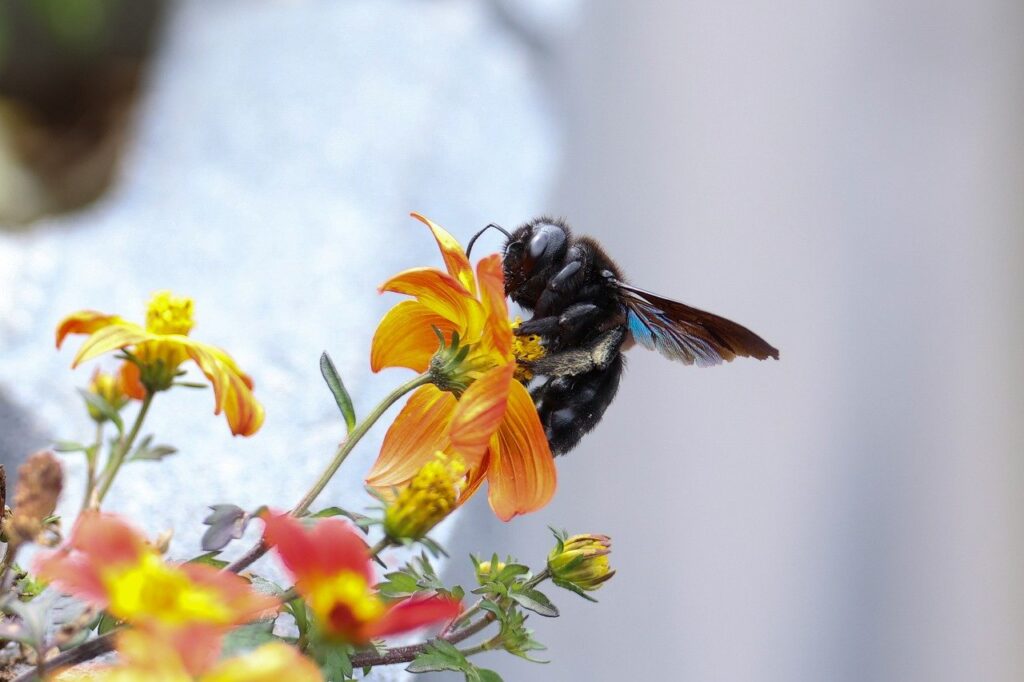Chances are, you’ve encountered the menacing presence of a large, robust, black and yellow bee, also known as the carpenter bee, especially hovering around wood structures in your yard, such as the deck, porch, garage, or shed.
Carpenter bees seek out unfinished or weathered wood structures, which they do not actually feed on but instead use to build their nests.
They also tend to build multiple nests, which can quickly lead to an infestation as well as repeat visits each year as they often remain in their nests until they reemerge in the spring.
The bees that you see are also most often the male bees, which do not sting; however, the female bees may sting if they are provoked.
What are Carpenter Bees?
Carpenter bees, which get their name from their infestation of wood, in which they drill holes into to enter, are 8mm to 25mm long bees with a dark-colored body, ranging from black to purplish-blue to greenish-black, and yellow markings on their thorax, legs, and abdomen, similar to bumblebees.
These bees are most commonly found in the eaves of a property, in fascia boards, in siding, and in decks. However, you will usually find them wherever there is soft, aged wood or wood that has not been finished.
Once they enter the wood, via tunnels they have hollowed out, they will then construct their nests, which will remain in place until the next season when they reappear again.
Provided the nests remain unbothered, the carpenter bees will not only continue to occupy the nests until the spring, but they will also dig more tunnels in the wood for additional nests, causing major damage to the structure.
Are Carpenter Bees Dangerous?
The main nuisance with carpenter bees is the boldness the male bees display when encountering people and pets, which can be intimidating. However, unlike the male carpenter bees, female carpenter bees are capable of stinging but usually only do so if they feel threatened.
Carpenter bees may also cause structural damage in wood due to the many tunnels they can burrow over time, which can weaken the structure on the inside and cause it to give out.
They are also known to leave unsightly feces stains behind, which can cause cosmetic damage.
Treating Your Carpenter Bee Problem
The best way to prevent carpenter bees is to paint any unfinished or aged wood with exterior paint or apply a polyurethane finish to the wood.
You should also keep any wood doors that open up to the outside closed to prevent carpenter bees from drilling holes in the wood.
Meanwhile, an aerosol bug spray can be used to help manage flying carpenter bees around your structure.
You can also contact a professional pest control company to implement a plan to rid your home of carpenter bees that may include treating your structure with an insecticide.
Once the carpenter bees have evacuated the nests, you can then seal the holes to prevent them from returning.

